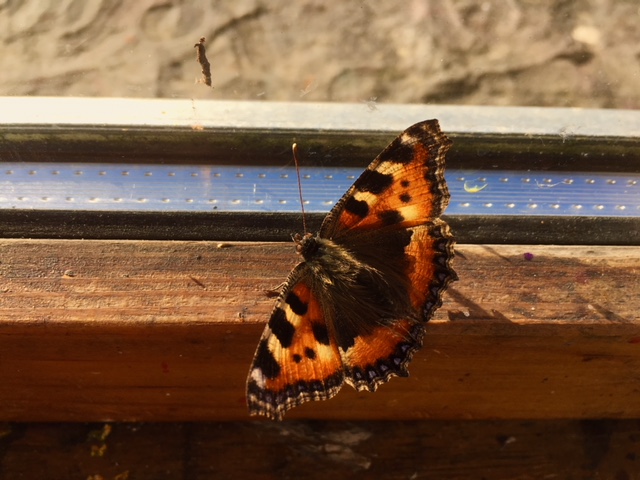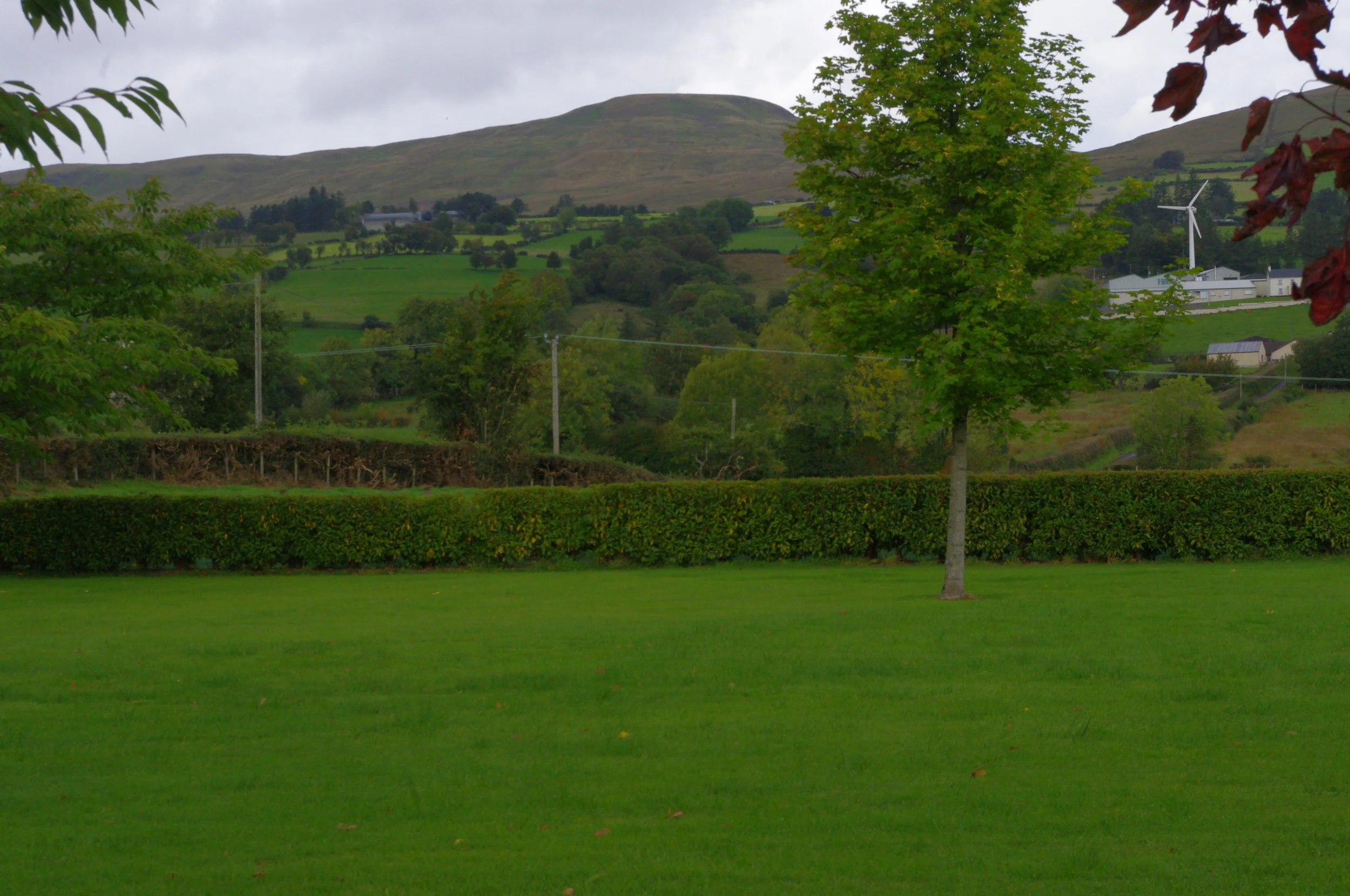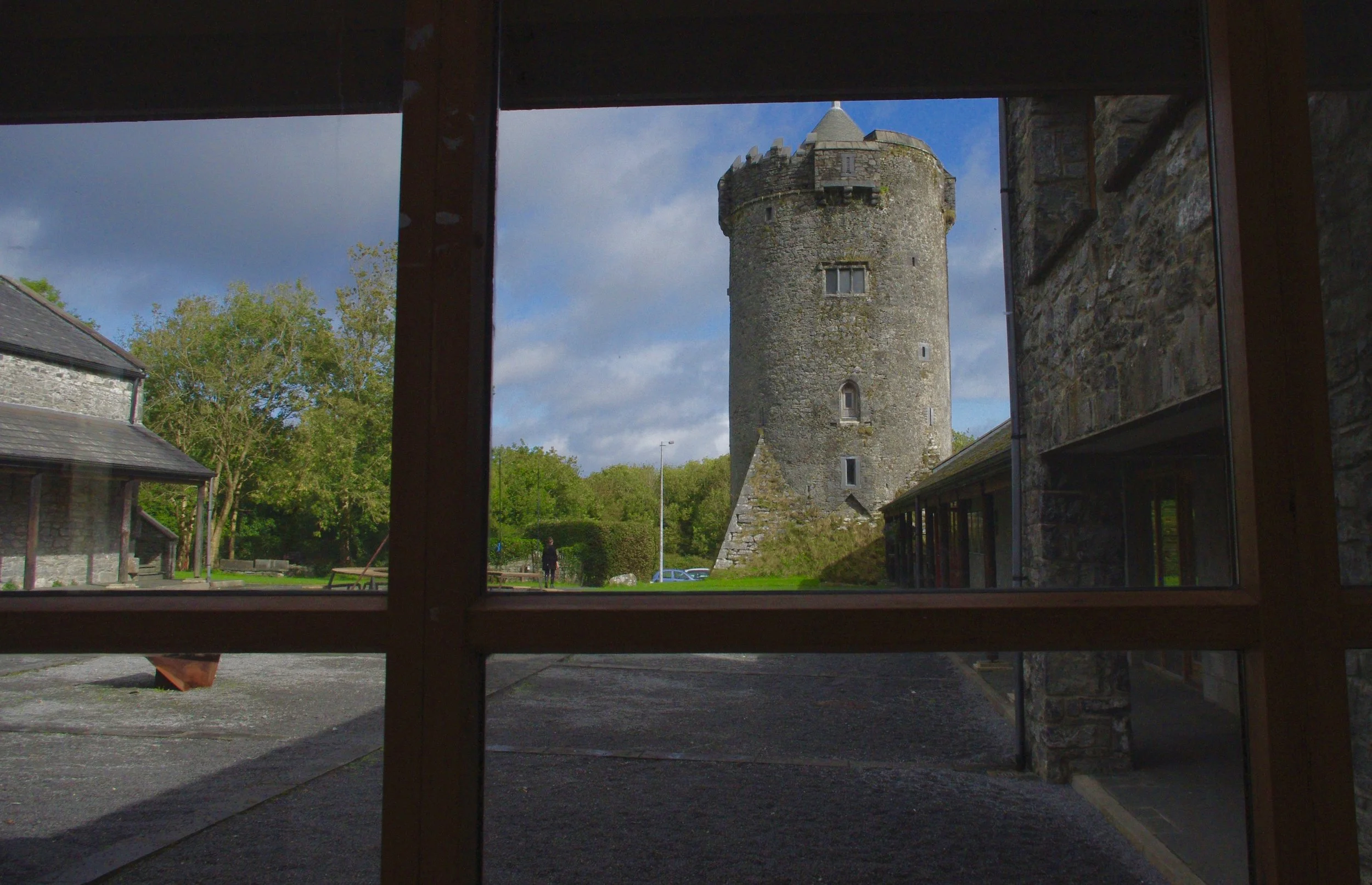These last two weeks I’ve translated my identity between places: Hobart-Melbourne-London-Dublin-Belfast; to my mother’s cousin’s farm in county Derry, and to the lakeside in Fermanagh, near my father’s ghosts and relics. Now I’m back in the Burren, county Clare, peering through my studio window at the tower house. Grass grows between the cracks and from the sloping base, like our histories, stories, places, wars, lives, deaths, and families, with all their multiplications: an endless cacophony of subjectivity.
A storm from the North Carolina coast was forecast to burr across the Atlantic and slap into the west coast of Ireland last week. It came at first with an apology: light rain, spinning wind and “humid conditions”, which in Ireland is 15 degrees. I looked out on scudding clouds, teasers of blue and trees considering autumn. I hoped the weather would brighten. A day later Ali crashed the coast, the first named storm of the season: 140 km winds hit during the night and blew away a Swiss tourist’s caravan, with her inside. She died tumbling the cliffs, crashing into the surf below. Imagining such a death, and in the dark, I sense stupefying terror and isolation far beyond possible apprehension. Here in west Clare we stayed inside while trees resigned from vertical and rain fell like lead sheets. My brief excursion in my car to an early morning yoga class felt almost suicidal. The weather delayed the ploughing festival in Offaly, an annual event that celebrates rural life in Ireland, tine by tine. It’s the biggest outdoor event in Europe; fortunately it’s a long way from here or our roads would have been as clotted as those in Tullamore. Here in this farming community there are many tractors and machines finishing silage harvests before the grass dies off, as weather cools, and when cattle will be sent to the Burren uplands for wintering.
The tower house remains vertical, in all weathers, unlike the Albert Memorial clock tower in Belfast that is leaning; is it to the right or to the left? I took a walking tour in Belfast, one of my rare participations in organised tourist projects. A historian, who was 10 when the Troubles were at their most troubled in the 1970’s, took us on the History of Terror walk, pausing at significant sites to tell stories of terror/ism. I had visited the Troubles display at the Ulster Museum the previous day and still felt emotionally withered in response to the images and narratives commemorating the 1968 civil rights march from Belfast to Derry and the marchers’ traumatic grief at the launch of sectarian insanity at that march.
We walked to the site of the Abercorn bombing of 1972, where two young women left a bomb in a crowded family restaurant after being denied entry to the upstairs bar. Two people died and more than one hundred (mostly women and children) were seriously injured in the explosion. The bombers have never confessed nor been found: I wonder at their lives, lived in the wake of so much destruction, desecration and physical and mental trauma. I was stirred by the story of one of the young women who died that day, whose name was Breen (but later I found it to be Bereen), and whose father, a doctor, was on duty when she was brought to the hospital.
Sectarian conflict surpasses, to me, any notion of what religion, of any stripe or band, might represent. To be so cast in metal, without any notion of alloy or humus, disturbs my sense of what it means to be human.
A butterfly has come into the studio.
View of the Sperrin Mountains from the gate of my grandmother’s farm, Co Derry.
Newton Castle, Burren College of Art


